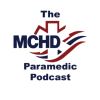This article originally appeared in the EMS1 Digital Edition, “Prehospital trauma: Today’s tenets for triage, treatment and transport.”
By Devin Shumway, MD; Casey Patrick, MD; and Robert Dickson, MD
Traumatic brain injuries (TBIs) are a common injury pattern and can result in significant morbidity and mortality. Injury to the brain tissue can affect the functionality of the brain and can have a prolonged effect on both mortality and quality of life [1]. Recent studies such as the “Excellence in prehospital injury care” (EPIC) study demonstrate improved TBI outcomes with aggressive prehospital preventative management of oxygenation status and blood pressure [2].
The EPIC study group has produced multiple statewide, trauma registry-based studies performed on prehospital TBI patients. The original study population represented over 21,000 TBI patients and included 130 emergency medical services throughout Arizona. EPIC was conducted at the University of Arizona and looked at the 5 prior years of treatments and outcomes in TBI patients (“before” group) compared to a group of similar brain-injured patients after implementing a state-wide targeted intervention protocol (“after” group) to improve care in these patients.
After the TBI protocol implementation, researchers monitored the morbidity, mortality and neuro-intact survival of the post-intervention patients compared to pre-intervention patients. The study demonstrated that when aggressive prevention of what they termed the “H-bombs” (hypoxia, hypotension and hyperventilation) occurred in patients with severe TBI, significant improvement in survival was identified [2].
One thing that is very clear from EPIC is the importance of proactive maintenance of oxygen status in TBI patients. The data from EPIC showed that a single episode of EMS hypoxia, with a SpO2 of <90%, was associated with a seven-fold increase in mortality. Preventative measures of hypoxia included early oxygen administration, BVM for airway compromise, and/or endotracheal intubation/supraglottic airway placement when other foundational basic interventions had failed. The observed increase in survival was achieved by preventing hypoxia with early oxygenation. There was no need for new equipment or large paradigm shifts in typical management.
EPIC TAKEAWAYS
Every patient with a suspected TBI should receive, at minimum, high-flow oxygen with a non-rebreather. More importantly, as EPIC protocol states, advanced airway management is only considered when conventional BLS airway management fails. When considering advanced airways, TBI patients should be properly pre-oxygenated to limit the risk of hypoxic episodes before attempting placement, as any hypoxic episode with oxygen saturation < 90% was associated with significantly worsening outcomes in these severely injured TBI patients.
As for the hemodynamic side of the Arizona intervention, a crystalloid solution was used by EMS in the study to prevent hypotension. Like hypoxemia, one reading of < 90 mmHg was associated with a seven times increased mortality. Multiple studies have shown neurological benefits to maintaining blood pressure in TBI patients, and studies are ongoing looking at where “ideal” blood pressure truly exists for these patients.
Finally, the ventilatory status of these patients is essential as well. Hyperventilation was previously believed to benefit these patients by constricting cerebral vasculature and decreasing intracranial pressures. This practice has been demonstrated in multiple studies to have little benefit and potential for harm in TBI patients, potentially even increasing mortality. Therefore, using and monitoring the end-tidal waveform and keeping it between 35-45 mmHg while ventilating is essential.
The impact of this data on emergency providers can’t be underestimated. Like other complex medical conditions (e.g., out-of-hospital cardiac arrest), sometimes, the most impactful patient care interventions are found in the foundational care we, as EMS providers, perform every shift.
References
- Spaite DW, Hu C, Bobrow BJ, Chikani V, et al. “The effect of combined out-of-hospital hypotension and hypoxia on mortality in major traumatic brain injury.” Ann Emerg Med 2017 Jan;69(1):62-72.
- Spaite DW, Bobrow BJ, Keim SM, et al. “Association of statewide implementation of the Prehospital Traumatic Brain Injury Treatment Guidelines with patient survival following traumatic brain injury: The excellence in prehospital injury care (EPIC) study.” JAMA Surg. 2019;154(7):e191152. doi:10.1001/jamasurg.2019.1152
- Spaite DW, Hu C, Bobrow BJ, Barnhart B, et al. “Optimal out-of-hospital blood pressure in major traumatic brain injury: A challenge to the current understanding of hypotension.” Ann Emerg Med. 2022 Jul;80(1):46-59.
About the authors
Dr. Devin Shumway is a medical student.
Dr. Casey Patrick is medical director for Harris County ESD11 Mobile Healthcare and assistant medical director for the Montgomery County Hospital District EMS service in Greater Houston. He is board certified in both emergency and EMS medicine, and works as a community emergency physician in multiple states.
Dr. Robert Dickson is an assistant professor of emergency medicine at Baylor College of Medicine in Houston Texas. He serves as EMS medical director of Montgomery County Hospital District EMS and is board certified in emergency medicine.






